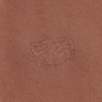Let's say that most of us don't have three hours a day to practice (I'm sure I would much rather be doing that than most anything else!). There are times when there is just no time to devote to physical practice. In this series of articles I will discuss different ways of musical practice that do not have to be done at home or in a studio.
Practicing aural skills is one of the most overlooked skills by guitar players. Unfortunately guitarists mostly think and play with their hands and not always what they hear in their head. I know I've been guilty of this as well. Once you start working on aural skills you should notice a change in your playing and improvising. Even your phrasing will become more natural and more musical. This can make the difference between some one who sounds pro and someone who sounds amateur. Now when I was attending UB I did take an aural skills class that covered scales, rhythm and sight singing exercises. Oh the horror I felt while in that class because it really opened my eyes to how I just couldn't connect the sounds in my head to the outside world. I couldn't stand not being able to sing a major scale although I could easily play it on my guitar in all positions!
So the first thing to work on would be singing the scales as you play them on the guitar internalizing how the distance between each pitch sounds. this will help identify intervals down the road. Also work with those intervals; prime, minor second, major second, minor third, major third, perfect fourth, augmented fourth, flat fifth, perfect fifth, flat sixth, major sixth, minor seventh, major seventh and octave and be able to differentiate between them. There are several websites that deal with intervals and identifying tonalities of chords one is www.eartrainer.de which is free to register and because it's online you can work on pitch identification from anywhere.
The next item to work on are rhythms. A level one book from Gary Chaffee would be the best such as "Rhythm and Meter Patterns" which you can find on Amazon.com and is relatively inexpensive. Tapping out the rhythms will jump start your brain into dividing beats into all the groups of notes. This book comes with a CD that you could listen to in the car. Think of how much time you spend driving in a car each week. For me it's about 200 minutes a week. It's about time you start putting that time to good use.
Another useful strategy - and one that is easy to do in the car - is the use of backing tracks. Backing tracks are sold in numerous places like online and in music stores in all styles of music. Pick whatever style suits you and start vocalizing ideas over the tracks. You don't have to worry about getting all of the notes right but focus more on phrases and breathing. Just like a wind player has to do. When you start thinking in this way you'll find that lines take on different shapes and contours that you wouldn't normally play. Also that phrases are more musical because you have to breath. Most guitarists do not breathe when they play which causes all types of rhythm and phrasing issues. So once you go back to the guitar after implementing some of these ideas you should start hearing a difference in your phrases.
One last thing to keep in mind is when doing these exercises is this: imagine the tone that you want to sound like and even picture what some of your favorite players would sound like. Use that as a guide if you get stuck along the way. Next time we will discuss how visualization can make an impact on your practicing.
Joe Pinnavaia is a professional musician, guitarist, instructor and composer from Buffalo, NY, USA.
His first solo release, "InVitro", under the project name Test Tube Rhino, is now available digitally from iTunes and Amazon from Steve Vai's Digital Nations.
